A series of four well-illustrated Powerpoint presentations under the general title “A Dip into the Archives” has been prepared by Elaine Richards G4LFM of RSGB Headquarters for presentation at local clubs, as part of the celebration of the Centenary of the RSGB in 2013.
1. “A Dip into the Archives”: an illustrated history of the early years and personalities of the RSGB.
2. “A Membership in Service to Their Country” – the contributions of RSGB members in the two World Wars.
3. “Transatlantic Tests 1921-25” – the intense competition to be the first to span the Atlantic by Amateur Radio.
4. “A Hundred Years of Amateur Aerials”.
LRS Secretary Alan Masson GM3PSP presented two of these talks at the meeting on 26th March 2014:
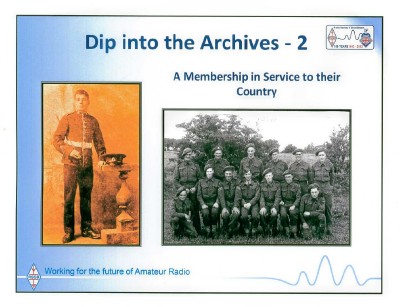
“A Membership in Service to Their Country”
The London Wireless Society, the forerunner of the Radio Society of Great Britain, had been formed only a year before war broke out on 4th August 1914. The GPO, the radio licensing authority at the time, shut down all amateur radio stations and took their transmitting equipment into custody for the duration of the War. Many radio amateurs used their radio skills to contribute to the war effort either in the armed forces or as secret listening stations, sending received German war traffic to “Room 40” of Naval Intelligence for decryption. They were able to pick up the orders issued to Zeppelins to get ready for raids on Britain, allowing the Royal Navy to take action to protect British shipping.
In August 1939 the same thing happened again, with amateur stations closed down and their equipment confiscated for the duration of WWII. Amateurs volunteered for the Royal Naval Volunteer Wireless Reserve and the RAF Civilian Wireless Reserve. There were 40 licensed amateurs among the first 50 personnel to land in France as the “Early Birds”. They set up radio stations equipped with T1083 transmitters and R1082 receivers. The RSGB continued publishing their journal the “T&R Bulletin” during the war, which was much appreciated by Members. The Voluntary Interceptors (V.I.) organization was started in 1939 after Arthur Watts G6UN, President of the RSGB, was approached by Lord Sandhurst of the Radio Security Service. Large numbers of VIs sent their received traffic to PO Box 25 in Barnet, for onward transmission to Bletchley Park for decryption. Among the VIs were three ladies, Barbara Dunn G6YL, Nell Corry G2YL and Constance Hall G8LY. Well-known after the war were Dud Charman G6CJ, Pat Hawker G3VA, Louis Varney G5RV and Ron Addie G8LT.
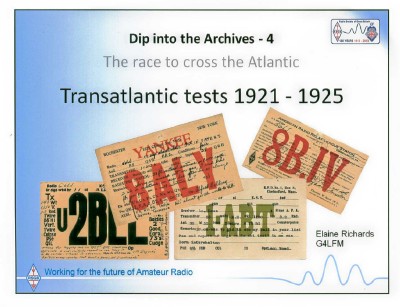
The Race to Cross the Atlantic – Transatlantic Tests 1921 – 1925.
A series of tests was proposed in 1920 in which British operators of receiving equipment would listen for high-power (100W) US stations.
The first test in December 1920 using the 200m wavelength / 1.5MHz frequency in what is now the Medium Wave broadcast band was unsuccessful when none of the 25 US stations was heard in Britain. The reason may have been the limitation placed on the length of aerials permitted by the GPO, the UK radio licensing authority.
A second series of tests was held in December 1921. An American amateur Paul Godley 2ZE travelled to the UK with his equipment to participate in the tests from Middlesex. He found however that atmospheric noise and harmonics from nearby transmitters prevented him from hearing any US stations, so he moved to Ardrossan in Scotland where he erected the first Beverage aerial in the UK – 850 feet long, on 12 foot poles (while the UK regulations limited the length to 100 feet). He positively identified US “super-station” 1BCG in Connecticut on 9th December 1921. British station 2KW of Sale Cheshire received 1BCG and seven other US stations on 230m / 1.3MHz.
French amateur 8AB had heard UK stations in October 1922 and he participated in the third series of tests in December of that year. 47 British and 2 Dutch stations made 2297 interceptions of US stations on 12-21 December. AM tests were poor due to the low modulation percentages achievable at that time.
On 27 November 1923, 8AB succeeded in making the first 2-way transatlantic contact with US station U1MO.
The first transatlantic contact from the UK was made on 16 December 19323 between 2OD and 1BQ in Canada, using only 30 watts on 116 metres. 2OD then went on to make the first contacts with Mexico, Argentina and Australia. The first UK – US contact was made by 2KF and A1MO of the ARRL. Both were using very simple receivers with a detector and one audio stage.
Further tests were conducted in 1924 and 25 with many transatlantic QSOs being achieved.
The Royal Order of Transatlantic Brasspounders (ROTAB) trophy was first awarded in 1924 to the those who were successful in the early tests. It involved an “interesting” initiation ceremony!
Three books recording RSGB history were shown by GM3PSP after the presentation:
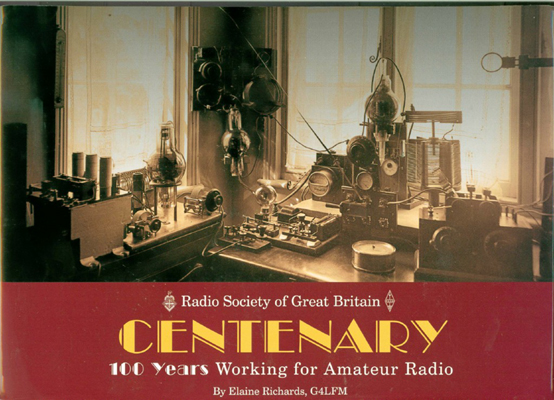
“Centenary – 100 Years Working for Amateur Radio” (2013) by Elaine Richards G4LFM.
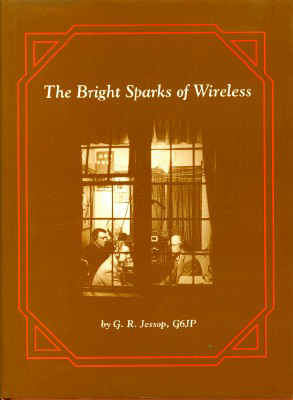
“The Bright Sparks of Wireless” (1990) by George Jessup G6JP, who also edited the RSGB VHF/UHF Manual.
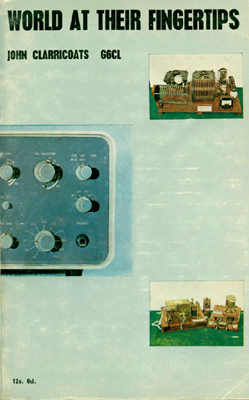
“World At Their Fingertips” (1967) by John Clarricoats, the long-time RSGB General Secretary.
